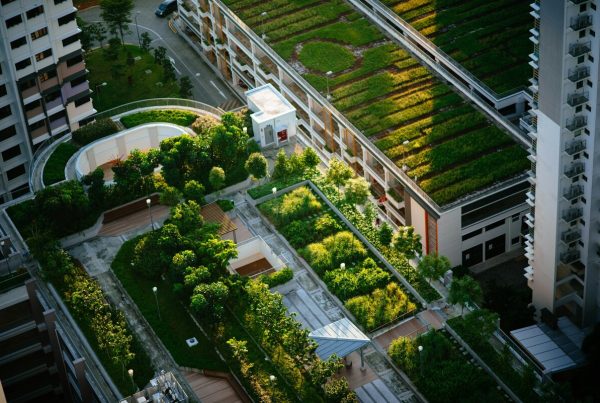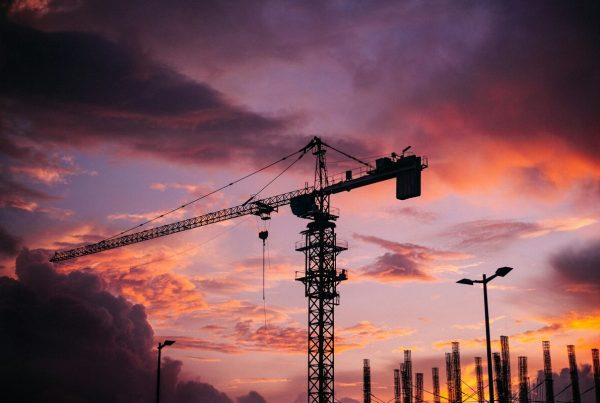It would be a significant win for the environment if commercial real estate (CRE) developers went circular. What does circularity mean? Is it different from sustainability? Learn about the circular economy and the relevant principles CRE interests should adopt.
What Is the Circular Economy?
The circular economy is a system that generates zero waste, maximizes resources in circulation and protects untouched ones. It’s the complete opposite of the mainstream — but unsustainable — linear economy fueled by the cradle-to-grave business model, which has caused various environmental ills.
Alternatively, the circular economy utilizes the cradle-to-cradle philosophy. It aims to imitate the life cycle of everything in nature, where organic matter serves a new purpose in one way or another safely.
Circularity can’t undo human activity’s ecological damage to the planet. Rather, it hopes to stop the bleeding and help nature heal itself while allowing civilization to thrive.
What Circular Economy Principles Should CRE Developers Adopt?
Pursuing circularity in every stage of CRE construction is one of the keys to achieving sustainability. Going circular involves reimagining how processes should work to be part of the solutions to environmental challenges — or at least stop contributing to the problems. Embracing these circular economy principles can help CRE players make the transition.
Eco-Friendly Building Design
Circular buildings must lend themselves to debris recovery, allowing their components to recirculate into the market easily when they reach their end of life. Designing deconstructable structures must be one of the primary priorities of architects and engineers keen on developing blueprints for sustainable construction. The circular economy depends on deconstruction to obtain resources efficiently and generate abundant raw material supplies to satisfy surging demand while keeping prices low.
A tried-and-true way to design circular commercial properties is using prefabrication innovations. For example, modular systems are painless to disassemble by design. These standardized building components should be easier to handle and haul, reducing recovery costs.
Prefabrication supports customization, too. Construction professionals can rely on circular products to meet unique project requirements.
Moreover, the circular business model is big on pollution reduction and climate action. It encourages architects to design out environmentally unsound property aspects, like unmitigated space conditioning loads. Incorporating regenerative and passive architectural concepts, water- and electricity-efficient systems, and renewable energy technologies promotes circularity.
Material Value Retention
This alternative system ensures resources recirculate as they are as much as possible. Maximizing their value in their present form means fewer potential greenhouse gas emissions and fewer opportunities for waste generation.
Aspiring circular CRE developers must prioritize used goods. Renting construction equipment and tools is more sustainable than purchasing brand-new assets, which possibly leads to virgin resource extraction.
Proper maintenance is also a circular practice. Regularly assessing and repairing construction assets helps address wear and extend their service lives, allowing them to stay functional and valuable for as long as possible, but the frequency of requirements varies by equipment. The American National Standards Institute requires aerial lift owners to get their mobile elevating work platforms checked at least once every 13 months by credentialed mechanics familiar with the equipment’s make and model.
Furthermore, procuring reused or redistributed supplies is another step toward circularity. Buying refurbished, remanufactured and recycled goods is sustainable, but reusing something repeatedly for its intended purpose without modifying it has less negative environmental impact.
Consumption Reduction
Being circular means consuming no more than necessary. No CRE players want to spend capital on surplus resources and lose profit due to budget overruns, but intention doesn’t always translate to action. Many waste funds because of inaccurate project cost estimation and inefficient management.
Innovation is the answer. Adopting digital technologies to collect granular data for predictive analytics is key to eliminating blind spots that can result in more accurate cost estimates. Embracing solutions optimized for material usage efficiency — such as construction 3D printing and prefabrication — can make every penny count.
Lean thinking also offers a path to circularity and profitability. Lean thinkers are bent on finding ways to operate efficiently, adding more value while wasting less in the process. In construction, lean-thinking leaders monitor inventory levels and worker productivity. They make every effort to prevent building defects that can result in rework, and streamline processes to eliminate redundant tasks and activities.
CRE developers must make it a mission to curb consumption without cutting corners to complete projects more quickly and minimize their environmental impact. Expending resources needlessly creates a lose-lose situation for all stakeholders.
Circularity Is a Ticket Into CRE Development Sustainability
Adopting the circular economy has drawbacks. The limited infrastructure for reusing and recycling materials forces many real estate developers to keep the same supply chain partners and maintain their linear ways, so it needs time to catch on. Still, CRE developers must reform their construction practices with circularity in mind wherever possible to be more sustainable sooner rather than later.











